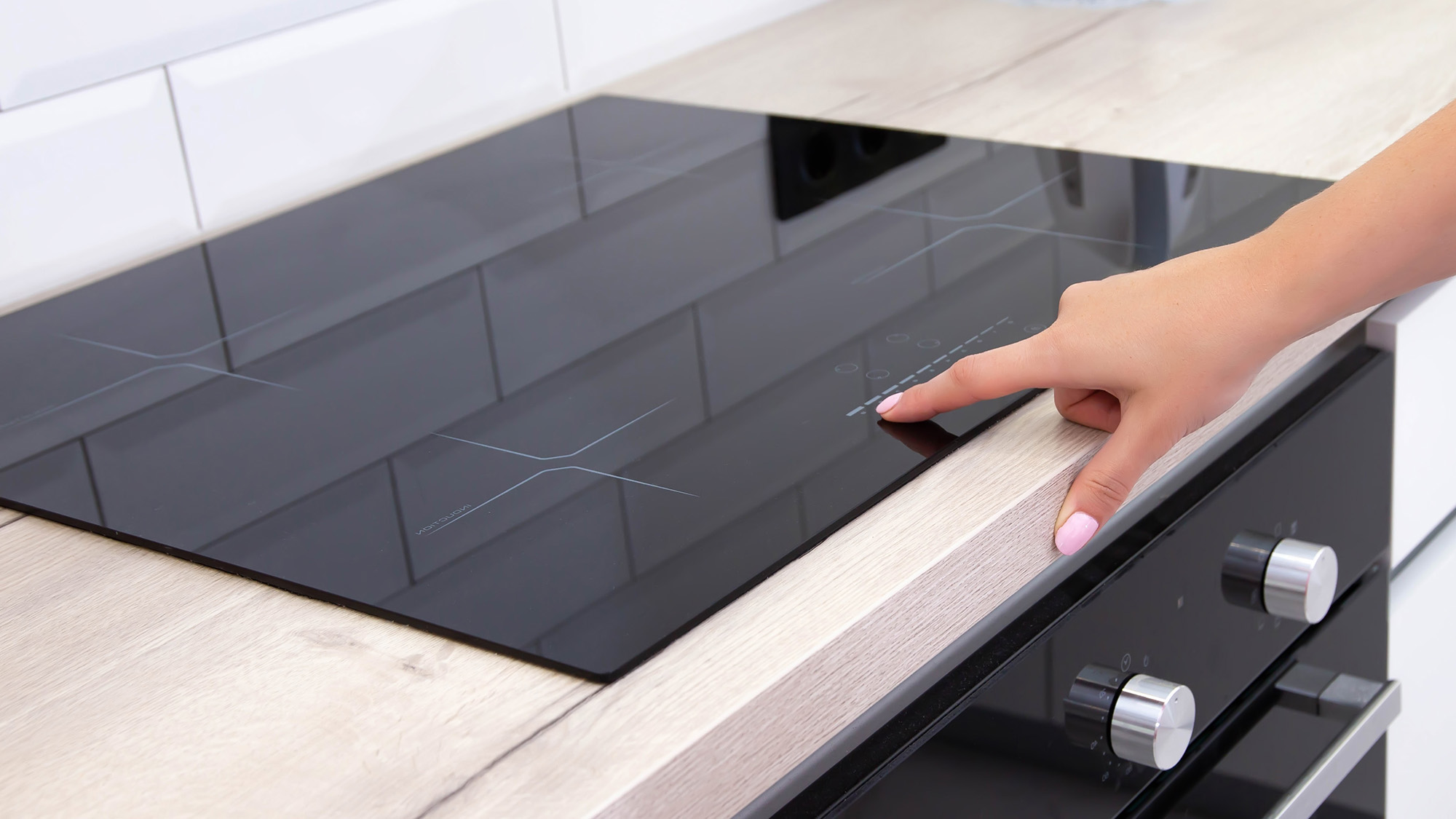Tom's Guide Verdict
With its slick and durable design, GPS and optional LTE, the Gear S3 Frontier has all the makings of the best smartwatch ever — if only it had more apps.
Pros
- +
Handsome and durable design
- +
Built-in LTE
- +
GPS
- +
Samsung Pay
- +
Good voice control
Cons
- -
Very limited app selection
- -
Heavy
Why you can trust Tom's Guide
Can you finally leave your smartphone at home? With its own LTE, heart-rate monitor, Wi-Fi and GPS — not to mention mobile payments and voice control — the Samsung Gear S3 Frontier is the first smartwatch that promises a fully untethered experience. This timepiece also happens to be gorgeous and pretty durable. And yet the 4G execution and app ecosystem aren't quite where they need to be.
Editor's Note: Since the Gear S3 Frontier was released, Samsung has come out with two successors, the Samsung Galaxy Watch, the Samsung Galaxy Watch Active, and the Samsung Galaxy Watch Active 2, all of which offer additional features such as on-board music storage. We really like the Galaxy Watch for its long battery life and stylish design, but the Galaxy Watch Active 2 is better for those looking for something smaller and sportier. And be sure to check out all our best smartwatch picks.
Design
There's no getting around that most smartwatches are built for larger wrists, and the Samsung Gear S3 Frontier is no exception. Its face measures 46 x 49 millimeters (1.8 x 1.9 inches), and the watch weighs 2.2 ounces (without the band). That's more than twice as heavy as the 0.99-ounce Apple Watch Series 2.
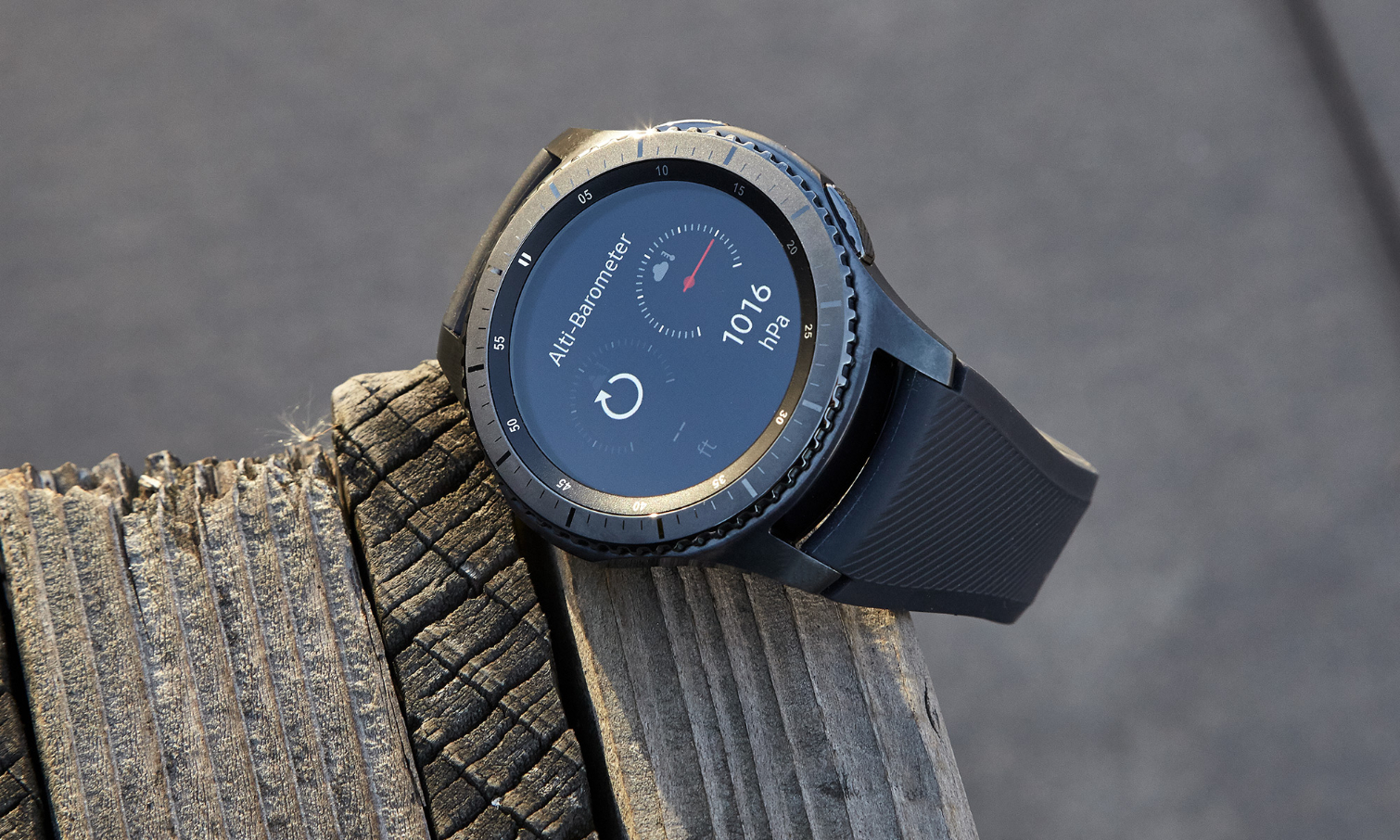
While not as flashy as the Fossil Q Founder — which remains my favorite-looking smartwatch — the Gear S3's stainless-steel case is attractive. I especially liked the serrations on the rotating bezel, which not only look great but make it easier to turn. It looks the part of a high-end timepiece, unlike the squared-off and uninteresting Apple Watch.
However, the Gear S3 is much larger and heavier than the Apple Watch and the Gear S2, which will turn off people with petite wrists.
Our review unit came with a rather blah black silicone strap, but it's easy enough to swap it out for any 22-mm strap. (Samsung sells additional straps starting at $29.99.)
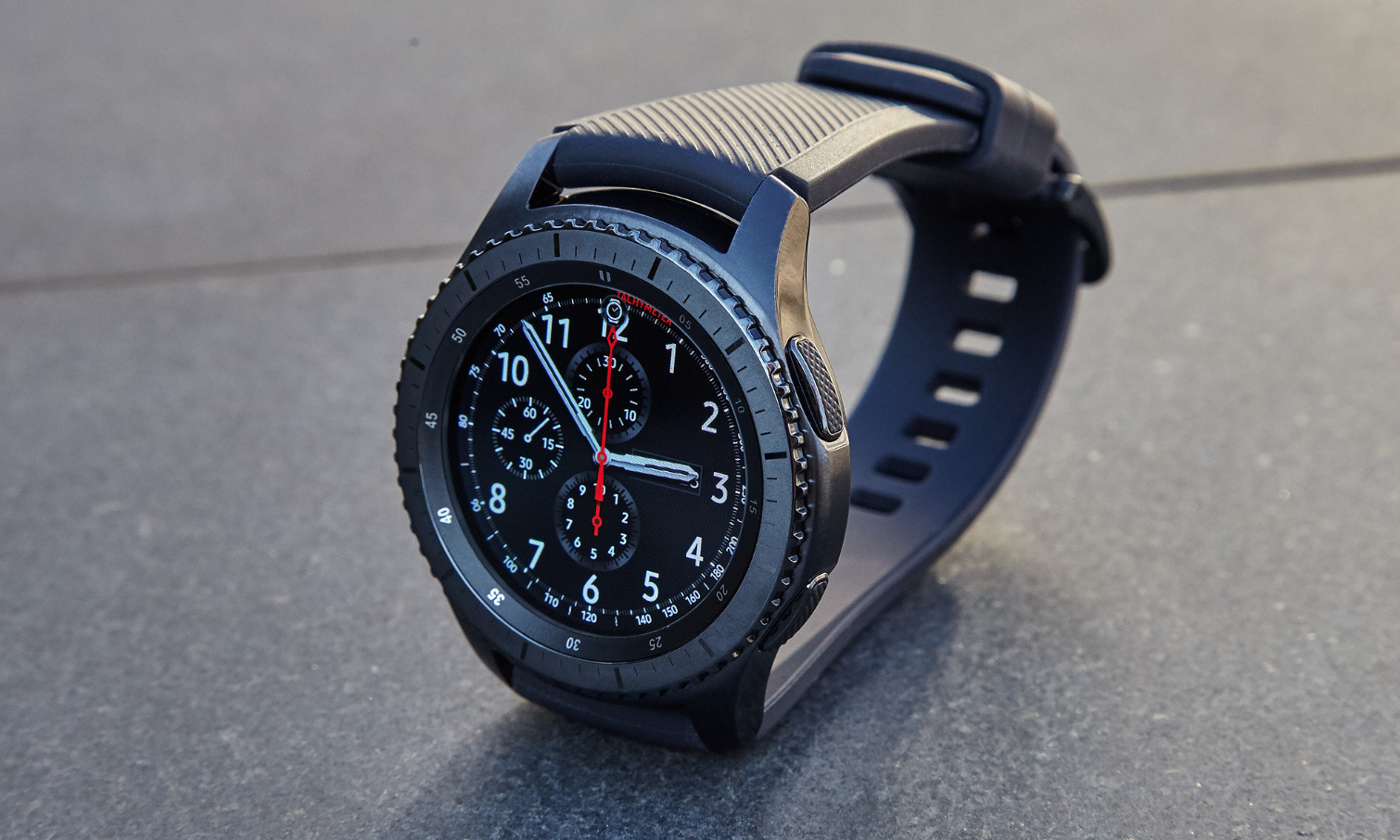
The right side of the S3 has two buttons: The upper one works as a universal back button, and the bottom button serves to return you to the home screen or the app menu.
The Gear S3 Frontier is built to take some abuse. Its face is protected by Gorilla Glass, and it's MIL-SPEC-810G rated to withstand drops of about 5 feet. The watch can withstand being submerged in up to 5 feet (about 1.5 meters) of water for up to 30 minutes. The Apple Watch Series 2, however, can go as deep as 164 feet (50 meters).
MORE: Best smartwatches
Display
The S3's 1.3-inch AMOLED screen was bright enough to view, day or night. With a resolution of 360 x 360 pixels (no flat tire!), images that appeared in Flipboard news items were crisp enough that I could make out the numbers on players' jerseys in sports stories. Colors, too, were vivid.
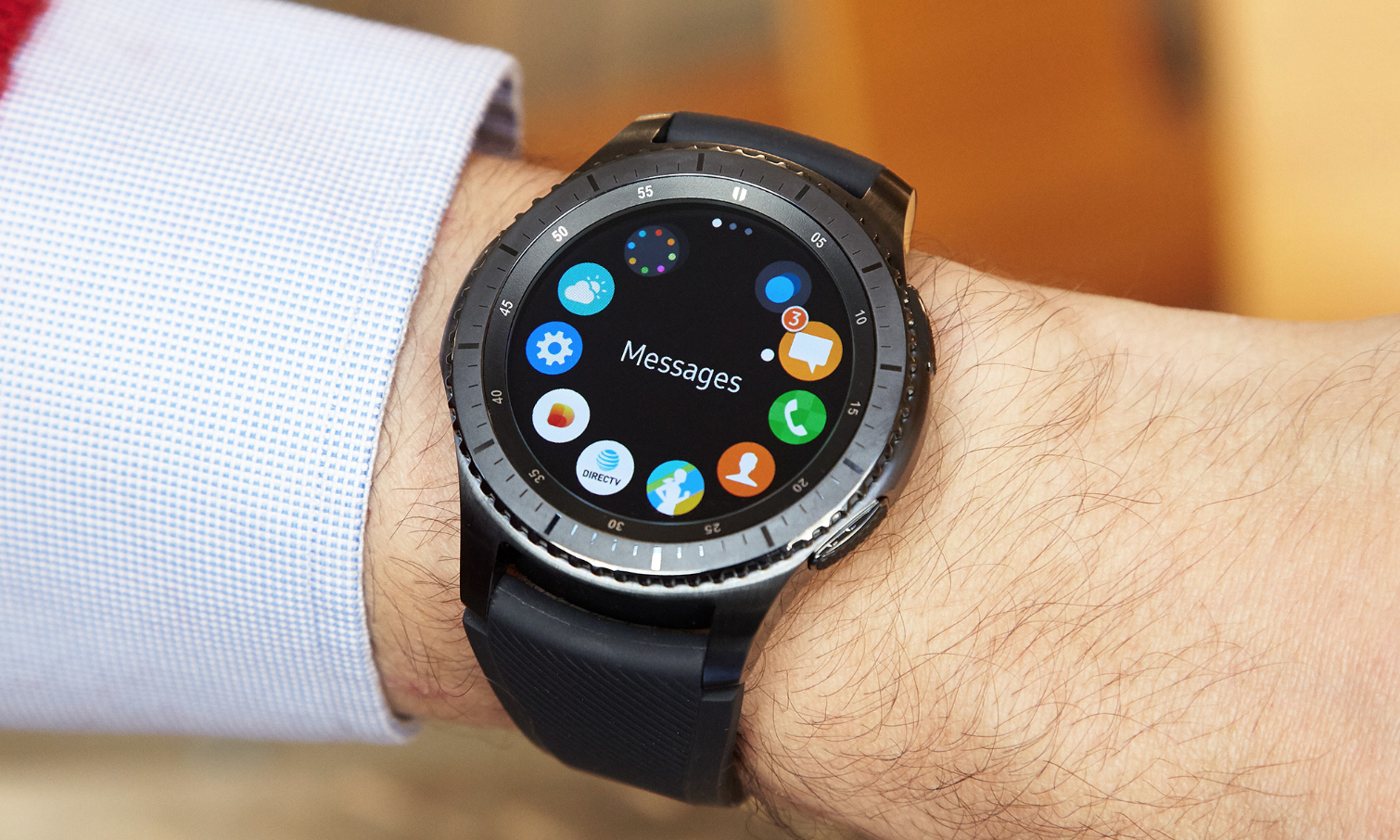
You have the option of setting the S3's display to always on; its "dimmed" setting doesn't differ all that much from when the screen is fully on. The Chronograph watch face, for example, looks nearly identical, with the exception that the second-hand subdial disappears and is replaced by a white tick mark that moves around the edge of the screen. The same is true for many of the other watch faces; while you lose little accents here and there, most of the colors and details remain.
Setting the display to be always on chews up battery life. Fortunately, I found that the S3's screen turned on almost instantly when I raised my wrist.
Interface
Instead of Android Wear, Samsung opted for its homegrown Tizen operating system for the S3. In some ways, it looks like a hybrid of Google's and Apple's watch operating systems. For the most part, I found it more useful than Android Wear, as it works equally well with Android and iPhones.
There are two layers to the Tizen OS. From the home watch screen, you can swipe left or right to access notifications and recently used apps, create reminders, and check the weather and health stats, among other tasks. When you press the bottom button on the side, the screen switches to Tizen's app menu; here, circular app icons are arranged around the edge of the S3's display. Only eight apps are visible per page, but as you install apps, additional pages are included.
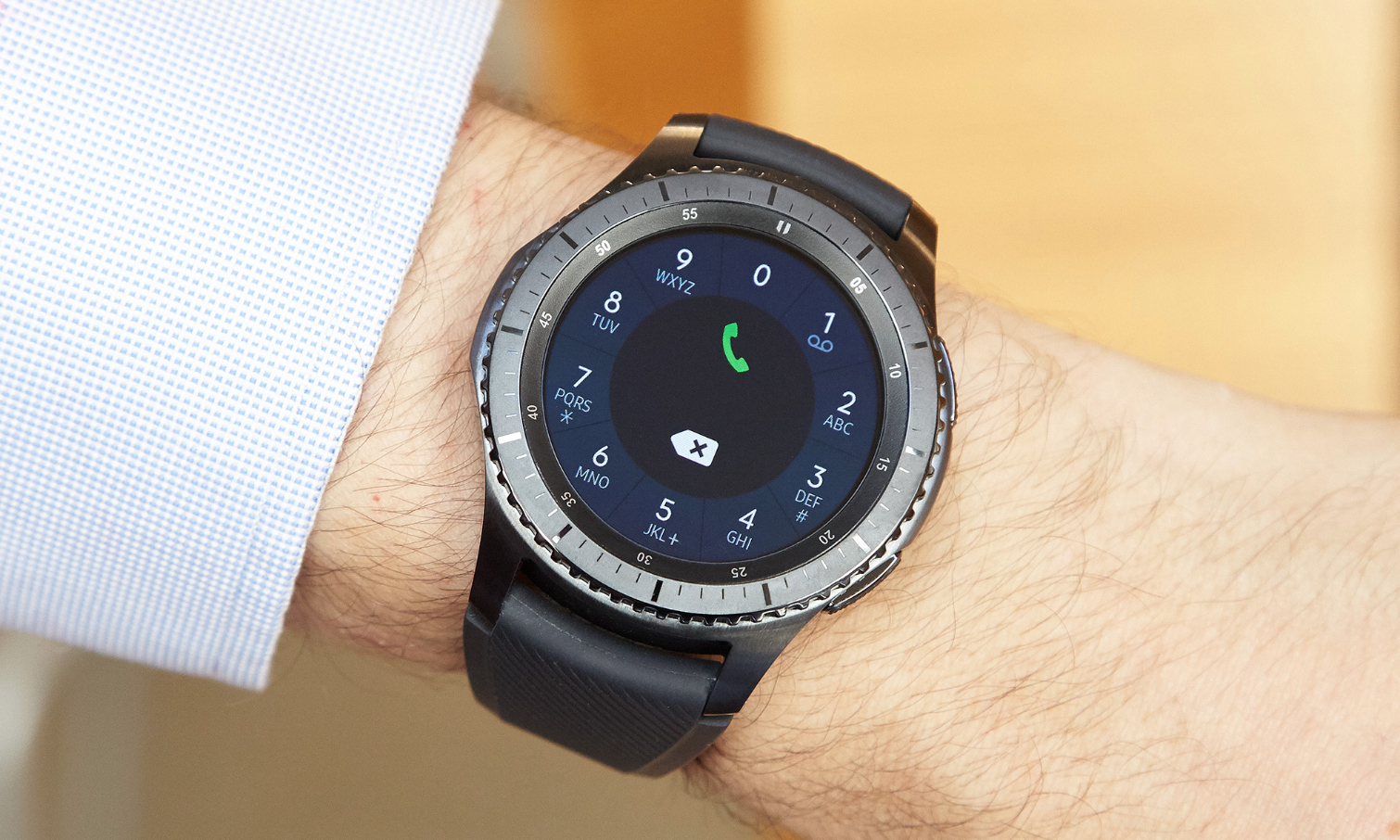
Like the Gear S2, the S3 has a rotating bezel that lets you scroll quickly and easily through menu items, apps and so forth. (You can also swipe the screen to achieve the same result, but it's nice to have options.) Each turn of the bezel is met with a subtle click and just the right amount of resistance; it reminded me of the dial on the Nest Learning Thermostat.
I also liked the myriad ways in which I could respond to notifications and messages on the S3 Frontier. For example, although there's no Facebook Messenger app — we'll get to that later— if I received a message while the S3 was tethered to my phone via Bluetooth, I could respond on the watch, either with a canned reply, or by typing or dictating a message. Even cooler was the ability to trace letters on the screen — much like you can do on the Apple Watch — to write out responses. I wouldn't want to compose a lengthy email like this, but it's good for messages of a few words.
MORE: Smartwatch Buying Guide
While I have my issues with Android Wear, one feature I missed on the S3 was contextual awareness. It would be great if the Gear S3 could automatically display directions for getting home about the time I was ready to leave, or if it could be smart enough to send me alerts and directions based on my calendar appointments. Hopefully, Samsung will integrate the smart assistant it's rumored to be working on for the Galaxy S8, but I wouldn't buy the S3 hoping for this feature to appear in the future.
Where are the apps?
The biggest issue with Samsung going it alone with Tizen as an operating system is that it has to convince others to make apps for its platform. And, as much as Samsung tries, it doesn't have the pull of Apple or Google.
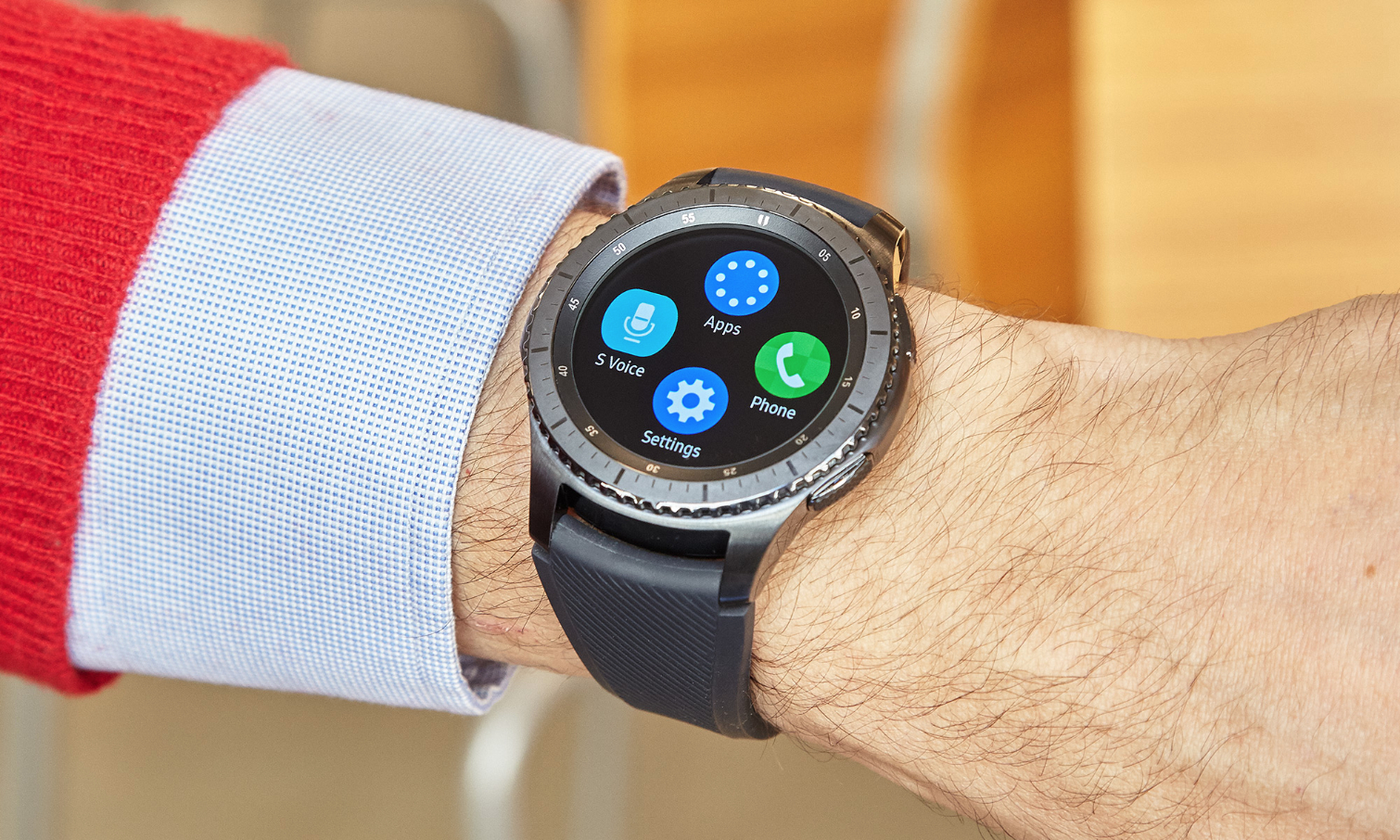
Sadly, little has changed in the year since Samsung launched the Gear S2. In the Health and Fitness category for Gear apps, none of the major players — MapMyFitness, MyFitnessPal, Strava, etc. — were present. You'll have to use S Health instead. While it's not bad per se, it stinks that you're so limited.
When the Gear S2 launched, Samsung claimed that apps for Twitter, eBay and Groupon were coming. One year later, only eBay has made an appearance. There is an app for controlling your Nest thermostat, but it's $1.99 and made by a third party. Despite the Spotify logo featured prominently on Samsung's product page for the S3, that app isn't available, either. (There is an app for iHeartRadio, though.)
Other categories were marginally better: I found Yelp, Uber, the Wall Street Journal, the Weather Channel and NPR. But there's no Facebook Messenger, no Twitter and nothing from Google. As of this writing, the ESPN Companion for Gear works only with the S2.
When tethered to a Samsung Galaxy S7 via Bluetooth, I was able to receive and respond to Facebook Messenger notifications. But when the phone was out of range, I was cut off from the social network.
Maps for Gear is surprisingly detailed given the S3's screen; you can zoom in and out using the rotating bezel, and see everything from subway stations to individual streets. However, it can't provide navigation unless the watch is paired with a phone. This seems like yet another missed opportunity, given that the watch has both a data connection and GPS.
One potential advantage the S3 has over other smartwatches is that you can install apps directly on the S3, rather than downloading them through a smartphone first. However, good luck finding any; in the Get More Apps screen, only 15 were shown, and it was a random assortment, from Korean Air to Fruit Ninja Plus to one that turns the S3's face white.
Fitness
While the S3 is packed with sensors — it has an altimeter and a barometer, in addition to GPS and a heart-rate monitor — the lack of major fitness apps for the Gear S3 is a bummer. You can sign up for the excellent Pear app, which provides training, but other than that, you're stuck with the Gear Fit app. To be sure, the S3 can track a wide variety of activities — including elliptical, rowing machines, squats, lunges and cycling — and it has an altimeter and barometer to measure your elevation and the weather.
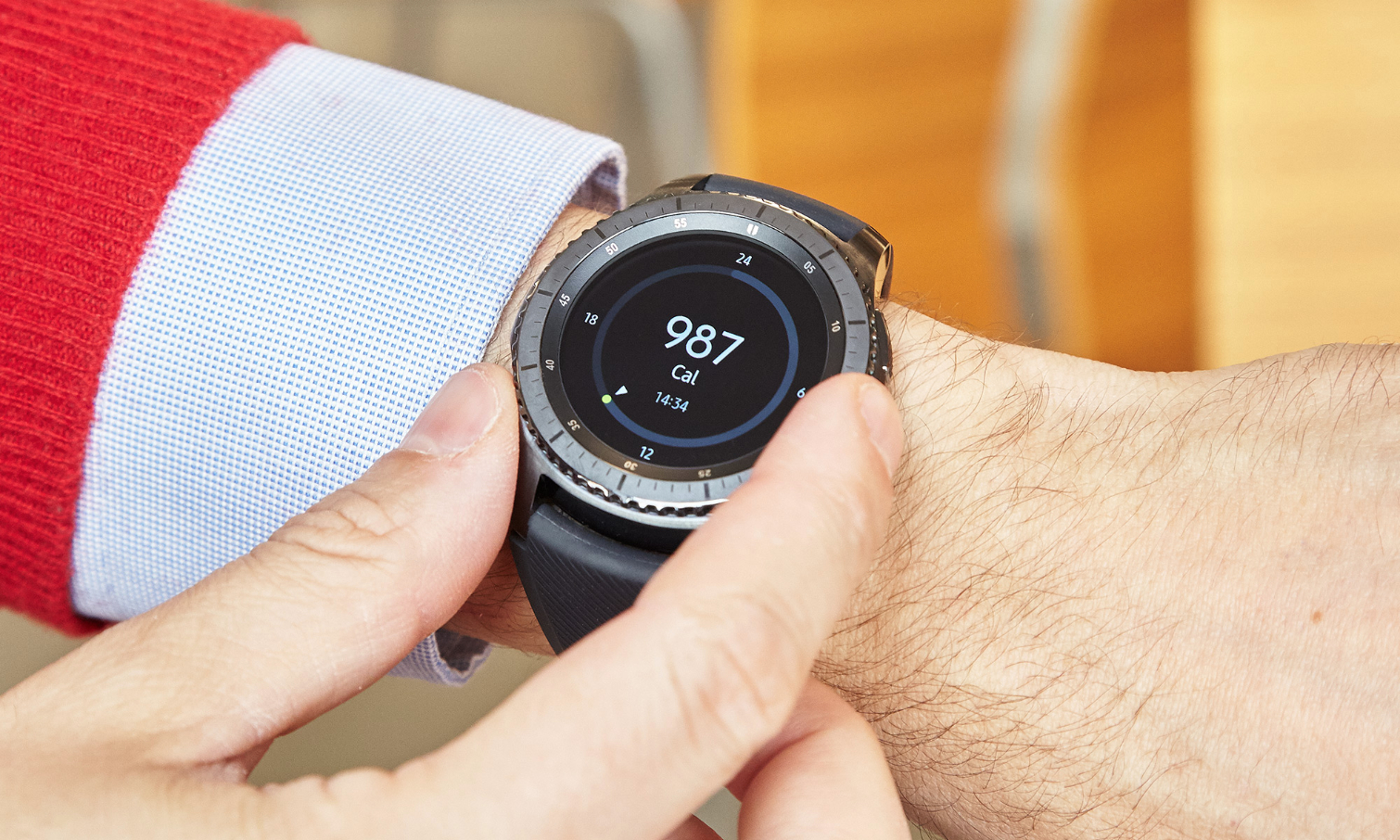
Although the S3 has two physical buttons, you'll still need to touch its display to start and stop workouts. This was problematic when my fingers were sweaty, as the screen didn't accurately recognize my touches. Fortunately, the S3 limits these interactions to taps, and not swipes. Cleverly, you can rotate the bezel to switch between distance, calories, pace, speed, cadence, heart rate and even music controls.
Just like the Samsung Gear Fit2 (and the Apple Watch Series 2), the S3 doesn't wait to acquire a GPS signal before it starts you on your run. This is a big miss, and one that Samsung needs to rectify. Every running watch I've tested — as well as the Moto 360 Sport smartwatch — will wait until it has a steady signal before sending you on your way. As a result, the S3 undercounted my runs by about a tenth of a mile or so. For what it's worth, the Apple Watch Series 2 overestimated my runs by about a tenth of a mile.
MORE: How to Choose the Right Fitness Tracker for Your Needs
Fortunately, the S3's heart-rate monitor proved more accurate, though I had to cinch the watch tighter on my wrist to ensure it read my pulse correctly. After my runs, I loosened the strap to a more comfortable setting.
As with the Gear IconX, you can transfer music you downloaded to your Samsung phone to the Gear S3 (it has 4GB of storage), so you can go for a run and listen to your favorite tunes without needing to carry your phone with you. This is a great feature, and one I'm happy to see spreading to more devices.
S Voice
Returning to the S3 after being omitted in the S2 is a built-in speaker that was surprisingly loud, which means the S3 not only listens to your commands but responds to them. Simply say, "Hi, Gear," and you can speak to the watch to do things such as send an email, call someone or check the weather.
However, Samsung's voice assistant is nowhere near the level of Amazon's Alexa, Apple's Siri or Google's Assistant. For instance, it can't answer questions such as "Are the Knicks playing tonight?" or respond to commands like "Directions home." It will tell you corny jokes, though.
The S3 Frontier was largely accurate when translating my voice to text; in very few instances did it mess up, and that was usually with words that had homonyms.
However, S Voice was a bit delayed in responding; you have to wait a second or so to speak.
4G LTE: What you can (and can't do)
The 4G LTE radio in the S3 Frontier unleashes the potential of a truly untethered smartwatch. Leave your smartphone at home, and you can still make calls, read (and respond) to emails and texts, get news and weather updates, and even download apps. However, as mentioned, if there's no app for the watch itself (such as Facebook or Twitter), you won't get those notifications, and thus won't be able to respond.

The S3 Frontier handled voice calls well. I easily heard a voice on the other end of the line when I made a phone call, and the person heard me equally well, even when I extended my arm.
AT&T customers can take advantage of NumberSync, which lets you use the same number on the S3 as on your smartphone, and make and receive calls and texts.
SOS is a good safety feature that lets you send a distress message from the watch to preselected contacts and let them track your location for up to 1 hour. After activating the feature in the Gear Manager and choosing a contact, all I had to do was press the Home button on the S3 three times, and a text message was sent to the contact, along with a link showing my location on Glympse.
Samsung Pay
You can leave your wallet at home, too. After registering your card(s) in the Gear app on your smartphone, all you have to do is press and hold the Back button, tap the Pay button on the S3, and then hold the watch near the terminal.
Gear S3 versions
The Gear S3 Frontier is available with LTE service from either AT&T or T-Mobile. If you choose this option, you'll also have to add it to your wireless plan.
If you're purchasing the watch through AT&T, it will cost you an extra $10 per month to add the S3 Frontier to your plan. If you purchase the S3 frontier for $49.99 with a two-year agreement when purchased with a Samsung Galaxy smartphone on AT&T Next or AT&T Next Every Year with eligible service on both devices. You can also get the S3 on an AT&T Installment Plan for $17.50 per month for 20 months ($350).

T-Mobile is charging $399 for the S3 Frontier, which you can pay in installments of $16.67 per month over 24 months. Additional charges include a $20 activation fee, plus $5 per month added to your mobile plan.
You can also purchase the Frontier in a Bluetooth-only model for $299.
The Gear S3 Classic ($299), which has a brighter stainless-steel case, does not have an LTE option.
Battery life
According to Samsung, the S3's 380-mAh battery can last up to three days on a charge. If you want to use it just as a watch, I'm sure that's possible. However, even with the display set to turn on only when I raised my wrist, no GPS tracking enable and just a few notifications coming through, I was able to get about 24 hours out of the S3 before needing to charge it back up.
Using GPS will drain the watch a lot faster, though; a 30-minute run used up a little over 10 percent of the S3's battery.
MORE: Best fitness trackers
The S3 charges wirelessly on a small stand; the dial turns 90 degrees so that you can easily see the time while it's docked.
Bottom line
If the ideal smartwatch is one that lets you leave your phone in your pocket — or at home — and still be just as connected, then the Samsung Gear S3 Frontier succeeds more than any other smartwatch, and yet still falls short in some critical areas.
For those who have Android phones, the Gear S3 is probably the best smartwatch yet, as it's generally more functional as a stand-alone device than any Android Wear watch. Plus, the design, though big, is more attractive than the Apple Watch, and you get an always-on display and built-in 4G.
As with the Gear S2, Gear S3 Frontier's biggest downside is that there simply aren't enough apps. Plus, the inability to check even sports scores or Facebook messages without your phone makes the S3 Frontier more frustrating than it should be. This is the best Android smartwatch, and yet it's still disappointing.

Michael A. Prospero is the U.S. Editor-in-Chief for Tom’s Guide. He oversees all evergreen content and oversees the Homes, Smart Home, and Fitness/Wearables categories for the site. In his spare time, he also tests out the latest drones, electric scooters, and smart home gadgets, such as video doorbells. Before his tenure at Tom's Guide, he was the Reviews Editor for Laptop Magazine, a reporter at Fast Company, the Times of Trenton, and, many eons back, an intern at George magazine. He received his undergraduate degree from Boston College, where he worked on the campus newspaper The Heights, and then attended the Columbia University school of Journalism. When he’s not testing out the latest running watch, electric scooter, or skiing or training for a marathon, he’s probably using the latest sous vide machine, smoker, or pizza oven, to the delight — or chagrin — of his family.
-
Paul_247 I have speed and cadence sensors on my bike. How do i get those to show on my gear S3 and not just in the S Health App?Reply
Conversely is there a way to broadcast live HR to the S health app on my phone while doing a workout.
The whole thing feels disconnected. I want HR and sensors on my watch and not split between the two devices. -
KevinDowson I have one and I have to disagree with what you say about the battery life. I have used the watch for over 2 days and it's still on 85%. I have the display configured to turn on when I raise my wrist but I have been using it to read notifications. Previously I had the LG Urbane and I was worried after reading reports about the battery life that I might need to charge the Gear s3 more but that's not the case.Reply
I love this watch, the quality of build is fantastic. App support could be better but you know for a watch the apps that come standard do just fine. -
TaylorP AT&T will charge a $45 activation fee without telling you. Also with taxes the wireless charges come out to over $22 a month. Would not recommend.Reply -
Clif_2 So I use my Gear S3 as a standalone device (yes with out a cell phone connection) & it works fine. I don't get the 2 day use without a charge like I've read & heard. Neither have I personally gone a night without sleep, I charge my Gear each night. I purchased Bluetooth neckwear to talk privately with calls, however the building I work in has Very Poor reception. So my Gear S3 will Constantly search for a data connection. PLESASE BE AWARE!, this Will Drain your battery in less than 5 hours! I found out the hard way. So Yes This Sucks! I place my watch on Greyscale until I leave my building, ie: going out to my car, or walking the campus for some reason. If I had know this, I would Never have purchased this devise. Never. I cycle & I love S Health. To sum up, I love this devise except when at work. Long story short I will be tethering this bad boy to my cell via Bluetooth as recommended.Reply
